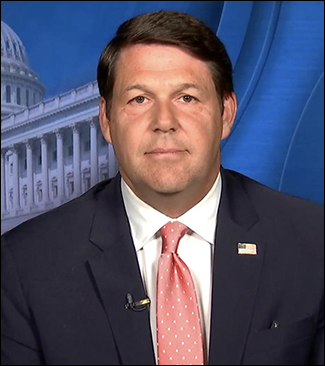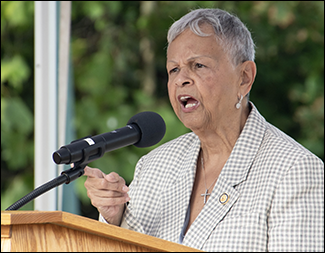By Jim Ellis — Monday, Dec. 1, 2025
Senate
Two new polls were released in the budding Massachusetts Senate Democratic primary, and both suggest that veteran Sen. Ed Markey will find himself in another tough renomination campaign.The first poll, from the University of New Hampshire, a frequent pollster of New England political races, tested Sen. Markey and Rep. Seth Moulton (D-Salem) who announced his primary challenge in mid-October. The result shows Rep. Moulton in a competitive position in a hypothetical one-on-one challenge race against Sen. Markey.
The second poll, from Suffolk University and the Boston Globe newspaper, tested Sen. Markey, Rep. Moulton, and Rep. Ayanna Pressley (D-Boston) who is considering entering the race. This poll result puts Markey and Pressley in a dead heat, with Moulton well behind. The Suffolk poll, however, does not meet the polling reliability standard as it relates to their Democratic primary cell segment.
The University of New Hampshire survey (Nov. 13-17; 618 registered Massachusetts voters; 343 likely Democratic primary voters; online) posts Sen. Markey to a 34-25 percent lead over Rep. Moulton. While the Senator maintains a lead beyond the polling margin of error, posting a support figure of only 34 percent within his own party certainly reveals a weak standing for a long-time incumbent. Markey was first elected to the Senate in a 2013 special election, but his first election to Congress, for the US House, came in 1976.
The Suffolk University poll (Nov. 19-23; 500 registered Massachusetts voters; live interview), sees Rep. Pressley leading Sen. Markey 35-34 percent with Rep. Moulton only scoring 16 percent. This poll, however, reveals only 144 responses from Democratic primary voters, with another 88 from Independent/Non-Affiliated voters who say they will participate in the Democratic primary. Thus, 232 responses are far below the minimum 300 sample cell standard for a statewide poll in a domain with nine congressional districts. Therefore, these results should be considered unreliable.
Regardless of what early polling may reveal, Sen. Markey is a proven winner over decades of campaigns, and he scored an impressive win in the 2020 Democratic primary. In that election, Sen. Markey defeated then-Rep. Joseph P. Kennedy III, thus defeating a member of the Kennedy family in their home state within the national party that his relatives once led.
Researching the polling archives from the 2020 race, we find that Sen. Markey trailed in the early going then, too.
From February through May of 2020, Sen. Markey fell behind Rep. Kennedy in three publicly released surveys from three different pollsters. The strongest Kennedy lead came from a Boston based Emerson College poll (May 5-6; 620 likely Massachusetts Democratic primary voters) that found a 58-42 percent margin in the challenger’s favor. The others showed the race much closer, but also with Kennedy leading.
In the September 2020 primary, however, Sen. Markey recorded a 55-45 percent victory after running a strong coalition-based campaign that overcame the “Kennedy mystique” in roaring fashion.
The Massachusetts primary is one of the latest in the country. In 2026, the Bay State Democratic voters won’t choose their nominees until Sept. 1. Therefore, this race has a long maturation period during which time we shall see major change.
The key facet may be whether Rep. Pressley decides to enter the Senate race. A member of the House Democratic “Squad” that New York Rep. Alexandria Ocasio-Cortez (D-East Elmhurst) leads, Rep. Pressley identifies as a Democratic Socialist.
She publicly confirms considering the Senate race and still has plenty of time to make a decision with a candidate filing deadline of May 5. The Congresswoman would risk a safe House seat, so the decision to run statewide against a veteran incumbent is major.
Rep. Moulton, who is viewed as being closer to the ideological center, would have a difficult time overtaking Markey in a head-to-head pairing since the Senator’s liberal record is closer to the Democratic base.
In a three-way race with Rep. Pressley added, Moulton’s chances may actually improve since the far left and the liberal left bases would be split between Markey and Pressley. This would give Moulton a better victory path because he could unite a coalition of more centrist Democrats. Though lesser in number, a three-way split would require less votes to win the plurality Democratic primary.
Expect to see a diverse set of released polling results at least through next Spring. Once Pressley makes a decision and we get closer to the election, clearer patterns will emerge. In the end, Sen. Markey will be favored and should record another convincing victory irrespective of who he may ultimately face in the Democratic primary.







